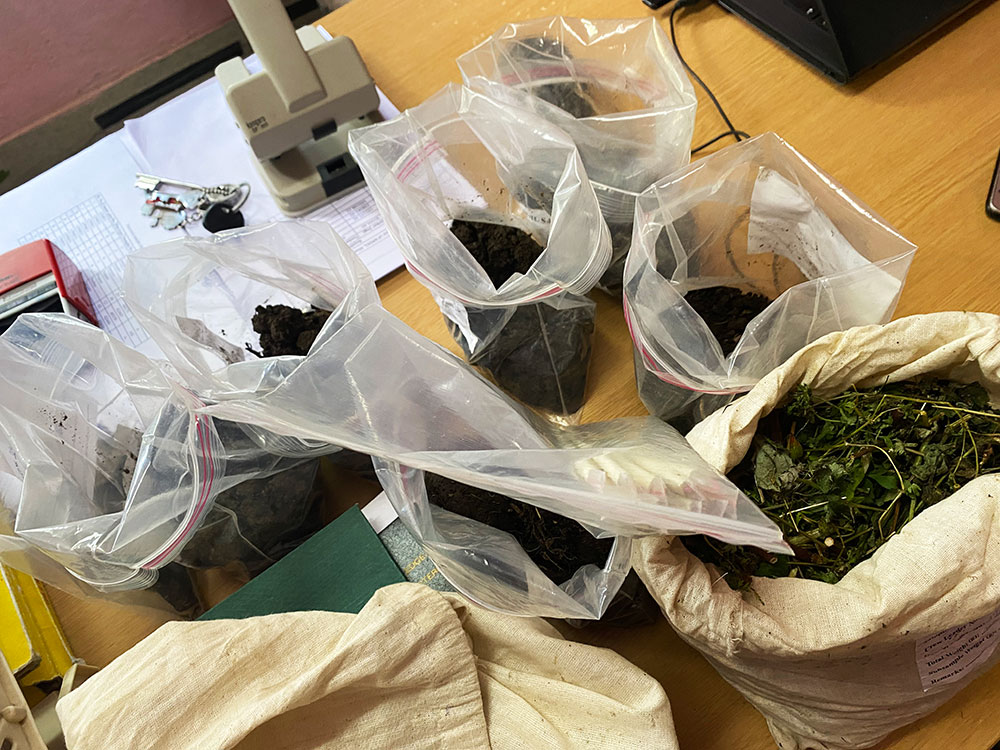Phurpa Lhamo | Wangdue
A monk calls to inform forest officials that a bear has been sighted at the tshamkhang in Gangtey gewog, Wangdue.
There is a rushed dinner. Six forest officials of the Wangdue’s forest division leave for Phobjikha–Gangtey’s beat office with a self-loading rifle and a torch.
By 8:30pm, they lie in wait, crouched in the attic of the tshamkhang. The plan is to fire a shot and scare the bear away.
After almost three months of constant bear visits to the tsamkhang seeking food, the beat office was informed about the issue.
Relocating bears, intercepting illegal fishing and poachers, and checking timber; whatever the task, forest officials have to be alert and on the ready.

Forest officials at timber extraction site in Gangtey checking the seals on the tree

“Protecting and conserving nature,” as senior forest officer Damber Mani Rai said, is the responsibility of the men in green. “As is delivering proper service promptly to the people.”
Meanwhile, over in the Gangtey valley, five men carrying their luggage and vital instruments are crossing passes, ridges, and climbing slopes collecting soil samples and mammal species details, as well as carbon samples for the second national forest inventory (NFI) database.
As part of NFI, a multipurpose database of Bhutan’s forest resources aimed at monitoring the spatial as well as temporal changes in the forest structure, the team has been in the field since July of this year.
The team leader of the group is Senior Forest Ranger II, Tshewang Namgyel. He said that the team collects data from trees, shrubs, herbs, mammals, and birds. “We have got a plot size of 12.62 square metres in which we need to collect data. It takes two to three days to complete one cluster plot.”
Wangdue’s forest division has 103 plots for data collection. That includes areas in both Wangdue and Punakha.
With the deadline set for June next year for all data collection, the team is almost always in the field.
Tshewang Namgyel said that the team returns home for two or three days at a time. Travelling through thick forests and crossing swollen streams is life threatening.
Among the journeys he has made so far, Tshewang Namgyel said that the treks to Tsechum, Dongkobji, and Babchen, located about five days’ walking distance away from Baelangdra in Kazhi gewog, were among the toughest. The areas are located over 4,700 metres above the sea level.
The team spent three weeks at Baelangdra before heading to Gangtey.
Tshewang Namgyel said some of the NFI teams of northern parks spent between three and four months continuously in the mountains “enumerating” the plots.
Among the current team, Tshering Namgyel said there have been minor injuries. Continuous travelling means exhaustion. The division lost a 45-year-old forester who fell into the Phochhu while patrolling the river in July this year. Similarly, a forest official suffered altitude sickness when travelling towards the Black Mountain Range in Wangdue on anti-poaching patrol and had to be rescued.
Damber Mani Rai said that the officials must be on duty 24 hours, seven days a week. He recalls living in a makeshift house in Mongar, which he found to be a difficult experience. “We didn’t have sleeping bags. We had to go without food for days, sometimes.”
“Minor incidents happen almost all of the time, but no one really complains because such is the nature of our job,” Damber Mani Rai said.
The team has been waiting for this moment. A bear shows up but lumbers away. It shows up again the next day and the team fires a shot, but the bear is not scared. So, the men set up a trap. The plan is to relocate the bear far away from the settlements.
It’s a success, finally, after about two weeks. The bear will be taken to a forest very far from the village.
Edited by Jigme Wangchuk


